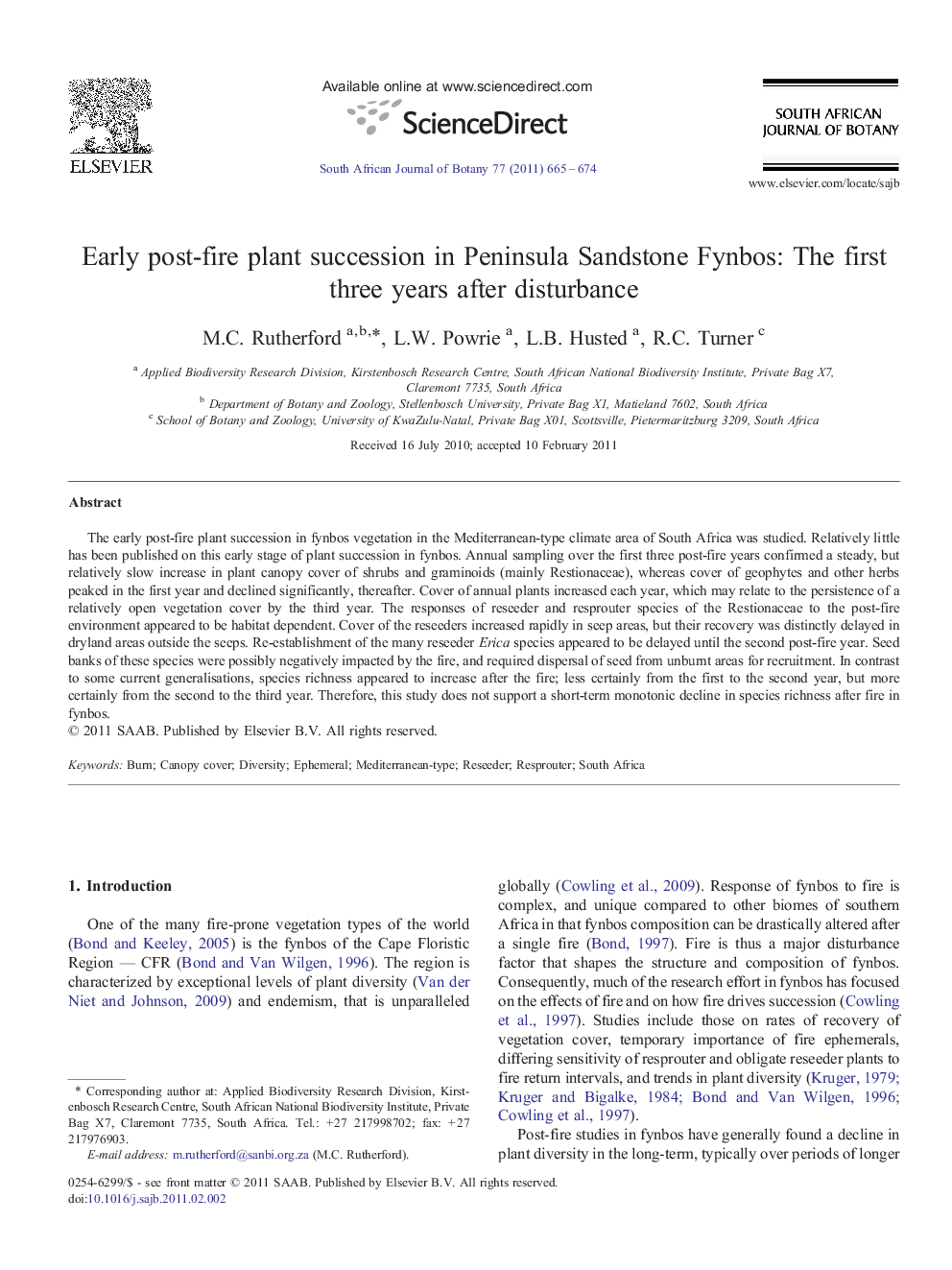| Article ID | Journal | Published Year | Pages | File Type |
|---|---|---|---|---|
| 4521212 | South African Journal of Botany | 2011 | 10 Pages |
The early post-fire plant succession in fynbos vegetation in the Mediterranean-type climate area of South Africa was studied. Relatively little has been published on this early stage of plant succession in fynbos. Annual sampling over the first three post-fire years confirmed a steady, but relatively slow increase in plant canopy cover of shrubs and graminoids (mainly Restionaceae), whereas cover of geophytes and other herbs peaked in the first year and declined significantly, thereafter. Cover of annual plants increased each year, which may relate to the persistence of a relatively open vegetation cover by the third year. The responses of reseeder and resprouter species of the Restionaceae to the post-fire environment appeared to be habitat dependent. Cover of the reseeders increased rapidly in seep areas, but their recovery was distinctly delayed in dryland areas outside the seeps. Re-establishment of the many reseeder Erica species appeared to be delayed until the second post-fire year. Seed banks of these species were possibly negatively impacted by the fire, and required dispersal of seed from unburnt areas for recruitment. In contrast to some current generalisations, species richness appeared to increase after the fire; less certainly from the first to the second year, but more certainly from the second to the third year. Therefore, this study does not support a short-term monotonic decline in species richness after fire in fynbos.
Research Highlights► Post-fire responses of reseeder and resprouter Restionaceae are habitat dependent. ► Re-establishment of Erica reseeders may be delayed after fire. ► No evidence of early decline in species richness after fire.
